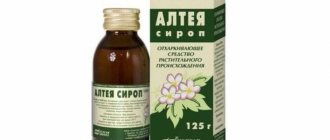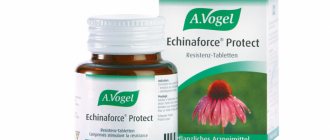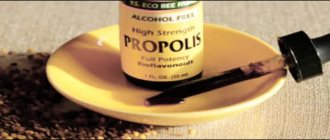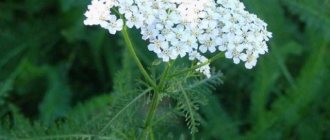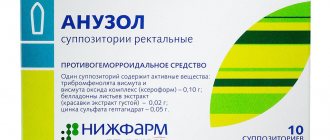People call marshmallow differently: marshmallow, wild rose, kalachiki, mucus grass. This plant is distributed almost throughout the planet, and it is not surprising that in each region this medicinal herb is called differently. But many names are not the only feature of marshmallow. Much more impressive is the list of beneficial properties that have been attributed to this herb since the 9th century BC. This plant was cultivated by the ancient Greeks and Romans, who gave the plant its name - Althaea, which means “to heal.”
Botanical characteristics
Althaea is a plant from the mallow family, that is, its closest relative is the same mallow that decorates flower beds and gardens.
Content:
- Botanical characteristics
- Chemical composition
- What are the benefits of marshmallow?
- Use in pharmacology
- Use in folk medicine
- Use in cosmetology
- Contraindications and possible harm of marshmallow
- How to properly collect and prepare
In the wild, marshmallows are typically found in damp areas near swamps, lakes, riverbanks and meadows, although some herbalists have successfully introduced this herb to their gardens. Marshmallow is distributed throughout almost all of Europe and Asia; it grows on the American continent and in northern Africa. Experts have counted 12 varieties of marshmallow, but only three of them have medicinal properties: marshmallow (Althaea officinalis), Armenian marshmallow (Althaea armenica) and hemp marshmallow (Althaea cannabina).
Marshmallow is a perennial herb with tall (sometimes up to 2 meters) erect stems. Externally, the plant is very similar to decorative mallow. The leaves of this herb are elliptical in shape, dissected into 5 or 3 segments, soft to the touch, as if covered with a felt layer. The stem is also fuzzy. The rhizome consists of a main woody root and a large number of fleshy laterals.
Throughout almost the entire summer, this herb pleases the eye with rather large pale pink flowers, which are located in groups along the entire length of the stem. By the way, marshmallow begins to bloom only in the second year of life. In autumn, fruits appear: one disc-shaped polysemane can contain from 15 to 25 flat, dark gray seeds.
The chemical composition and beneficial properties of the other two varieties of marshmallow (Armenian and hemp) are identical to marshmallow. The Armenian marshmallow has fluffier leaves, and this herb grows mainly in the Crimea and the Azov region. Hemp marshmallow has narrower leaves and bright red flowers. And you can find this grass in the south of Ukraine and on rocky slopes among bushes in Crimea.
Chemical composition
Researchers find chemical elements useful for humans in all parts of the plant, but their maximum concentration is concentrated in the roots, which are actually used by pharmacists and herbalists most often.
The roots of any marshmallow contain the most mucus (almost 35% of the composition) and starch (approximately 37%). The mucilaginous substances in the plant are usually polysaccharides, which, as a result of hydrolysis, are converted into galactose, dextrose, arabinose and pentose. By the way, in smaller quantities, but still quite a lot of mucus was found in grass leaves (within 12-13%) and in flowers (up to 6%).
In addition to starches and mucous substances, scientists found a high content of pectin, carotene, betaine, lecithin, asparagine, phytosterol, mineral salts and healthy oils in marshmallow roots. The amount of micro and macro substances in this part of the plant is also impressive. Marshmallow roots are a storehouse of potassium, iron, calcium, manganese, magnesium, and copper. In this part, researchers found zinc, chromium, cobalt, aluminum, vanadium, as well as some reserves of selenium, nitrogen, iodine, sulfur, lead and boron. The leaves of the grass are rich in essential oils, rubber-like substances, carotene and ascorbic acid.
What are the benefits of marshmallow?
Althaea belongs to those plants about the beneficial properties of which one can write treatises. And all because it has a beneficial effect on almost all organs and systems. For example, marshmallow is useful for the digestive, respiratory, and genitourinary systems; it has good analgesic properties, copes with diseases of the oral cavity, eyes and skin, restores the integrity of the mucous membranes of the human body, helps resist viral diseases, and strengthens the immune system. And recent research suggests that marshmallow may be beneficial for people with diabetes by regulating blood sugar levels.
Unique in terms of healing properties are the mucus contained in marshmallow. Researchers often compare them to flax seed mucilages, since the chemical composition of both is almost identical. Marshmallow mucus is useful for tissue regeneration, reducing inflammatory processes, and has mucolytic properties.
In addition, marshmallow root treats sore throat, jaundice, candidiasis, urinary problems, and removes stones from the bladder. Compresses from the decoction are useful for joint pain, tremors in the limbs, muscle pain, they relieve swelling, including in places of insect bites.
By the way, marshmallow extract is useful for overweight people, as it reduces appetite and creates a feeling of fullness. During diets, marshmallow is useful as a means of improving intestinal motility and removing toxins from the body.
There is information circulating on the Internet about another amazing ability of marshmallow - to increase the size of a woman’s breasts. They say that the miracle remedy should be prepared from the crushed root part and milk (a glass of hot milk per tablespoon of dry root) and drunk twice a day. Researchers are in no hurry to ridicule this recipe, since marshmallow actually has the property of regulating hormonal levels in the human body. However, if there is any result from taking such a natural medicine, it will not be very noticeable and only after several months of regular use. But for women during PMS or menopause, this marshmallow ability will come in handy.
Use in pharmacology
Marshmallow root has been known in medicine for centuries. Hippocrates mentioned the healing properties of the herb, and in the Middle Ages this medicine was used by Paracelsus, Albert the Great, the Arab healer Avicenna, as well as the Benedictine monks, who specially grew marshmallow in their gardens.
Official pharmacology usually uses marshmallow roots and seeds as a remedy. By the way, the popular cough medicine “Mukaltin” is made from marshmallow. Preparations based on marshmallow extract for internal use have enveloping properties, due to which they are considered useful for damage to the gastric mucosa. Many remedies for the treatment of gastritis with high acidity contain marshmallow, since the mucus of this herb, reacting with HCl in the stomach, increases its viscosity and covers the walls of the digestive organ with a dense layer, protecting it from the effects of acid. In pharmacies, marshmallow products are presented in the form of infusions, syrups, mixtures, herbal preparations, and extracts.
Interesting facts about the plant
The English name marshmallow marsh mellow is synonymous with marshmallow.a. The root of the plant has nothing in common with the modern confectionery product marshmallow. But a hundred years ago it was added in ground form to a mixture of beaten eggs and sugar. The freshly prepared dish was not only a delicacy, but also provided relief from colds and stomach diseases. Over time, the white, sticky mass based on marshmallow root was replaced by gelatin and starch.
Despite the cultivation of the plant, marshmallow is listed in the Red Books of many countries and regions: Hungary, Belarus, Georgia, Tatarstan, southern regions of Russia, etc.
Use in folk medicine
As already mentioned, it is the roots of this herb that have pronounced healing properties, although marshmallow greens are also used in many folk recipes.
Roots
Water infusions from marshmallow roots (1 tablespoon and a glass of boiling water, infused in a water bath for 20 minutes) are the most popular folk weapon against sore throat and other throat diseases. This medicine is good to rinse the mouth with inflammation of the gums or violations of the integrity of the mucous membrane. By the way, for treating the throat, the infusion is suitable both as a gargle and for oral administration (10-20 ml every 2-3 hours, you can add a little honey).
For tracheitis, bronchitis and some other respiratory tract ailments in children, taking marshmallow root syrup gives good results. This product can be bought at any pharmacy, or you can make it yourself at home. Herbalists prepare this medicine this way: add dried marshmallow roots crushed into powder (in a ratio of 98:2) to sugar syrup. When the powder gets wet, the mixture is stirred and heated well over low heat. After cooling, the medicine is ready for use.
The root part of the marshmallow is often included in herbal teas intended to treat stomach or duodenal ulcers. The most popular recipe of this type includes equal parts of marshmallow, comfrey (larkspur) and licorice (licorice) roots. Brew tea from a tablespoon of herbal mixture and a glass of hot water for 5 minutes, which is recommended to drink before bed.
Traditional healers recommend using a decoction of the roots to wash wounds, burns, and pustules on the skin. This remedy is useful for external use for furunculosis and dermatomycosis. And to treat tuberculosis, it is recommended to drink a milk decoction of marshmallow root.
Leaves
Juice from fresh marshmallow leaves (usually juicy greens collected in early summer) is also a useful medicine. If you take 20 ml of marshmallow juice three times a day (sweetened a little with honey), you can cure bronchitis, persistent cough, gastritis, enterocolitis, diarrhea, and cystitis. This remedy is useful for asthma, pulmonary tuberculosis and many other diseases. The juice of the herb is useful for external use. They are advised to wash their eyes, burns, and pustules.
A decoction of a mixture of leaves and roots can be used as a mild laxative, a medicine for enterocolitis, or to gargle a sore throat.
Decoctions and infusions from the flowers of this herb have the same effect as preparations from marshmallow roots.
Mechanism of action
The syrup is one-component and belongs to the group of expectorants of plant origin. Has the following therapeutic effects:
- dilutes bronchial secretions;
- facilitates coughing;
- relieves inflammation in the bronchi and lungs.
The drug promotes the formation of a mucous film on the membranes of the upper respiratory tract. This film is of plant origin, has a therapeutic effect, and also provides a longer local effect of other pharmaceuticals.
Use in cosmetology
Best materials of the month
- Coronaviruses: SARS-CoV-2 (COVID-19)
- Antibiotics for the prevention and treatment of COVID-19: how effective are they?
- The most common "office" diseases
- Does vodka kill coronavirus?
- How to stay alive on our roads?
In addition to everything said above, marshmallow is also useful in cosmetology. In particular, as a means to relieve irritation and inflammation of the skin, to accelerate cell regeneration and moisturize the skin, treat acne and acne. For dry skin, for example, lotions made from an infusion prepared from a glass of boiling water and one and a half tablespoons of dry crushed roots will be useful. It is useful to wash the skin with the same product after shaving, peeling or vacuum massage. Marshmallow leaves have antioxidant properties that prevent skin aging, restore its healthy glow and beautiful color.
For hair, marshmallow is useful as a remedy against baldness and stimulating the growth of new hair. A product made from marshmallow seeds and vegetable oil (1 tablespoon of seeds per 150 ml of oil) has proven itself well as a means for restoring curls. It is useful to rub this mixture into the scalp 1-2 times a week. The course of treatment consists of 15-20 procedures.
Sage to stop lactation
Sometimes situations arise when it is necessary to stop lactation. If this does not need to be done urgently, then the mildest remedy is sage infusion. It will slowly and painlessly reduce lactation. It is especially good to use sage at the moment when a woman is just thinking about stopping breastfeeding. A gradually decreasing amount of milk will signal to the baby that the breast is no longer needed and can be done without it, thus mother and child will be able to avoid a stressful situation.
Sage is also useful for strong milk flows when the baby does not have time to suck it out. To prevent congestion in the chest and mastitis, sage infusion will come to the rescue. It does not affect the properties of milk and is safe for babies. By gently reducing the level of the hormone prolactin, sage will help a nursing woman avoid unpleasant moments.
It is necessary to take sage to reduce lactation in the form of tea, when 1 teaspoon of ground herb or one stem from a bunch is taken for 1 glass of boiling water. You need to take it 3 times a day, 1/3 cup for 1 week.
